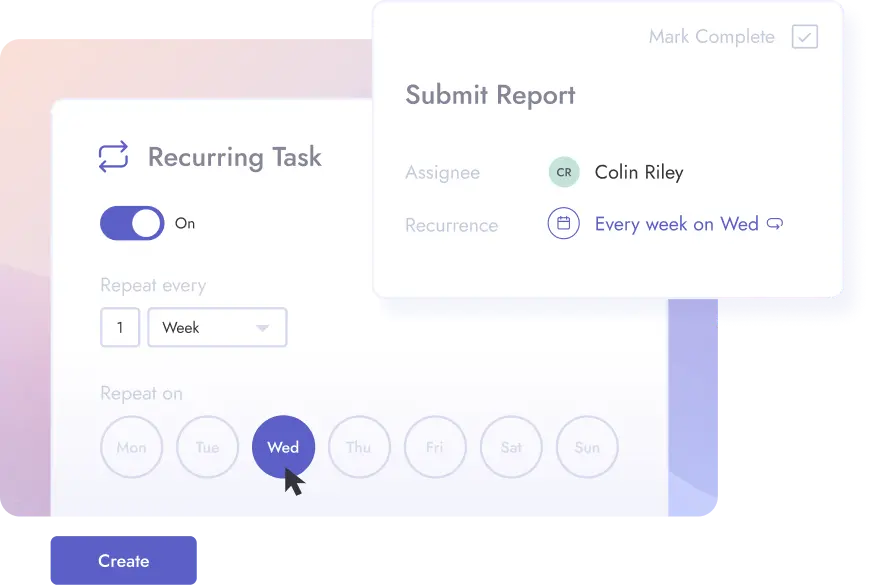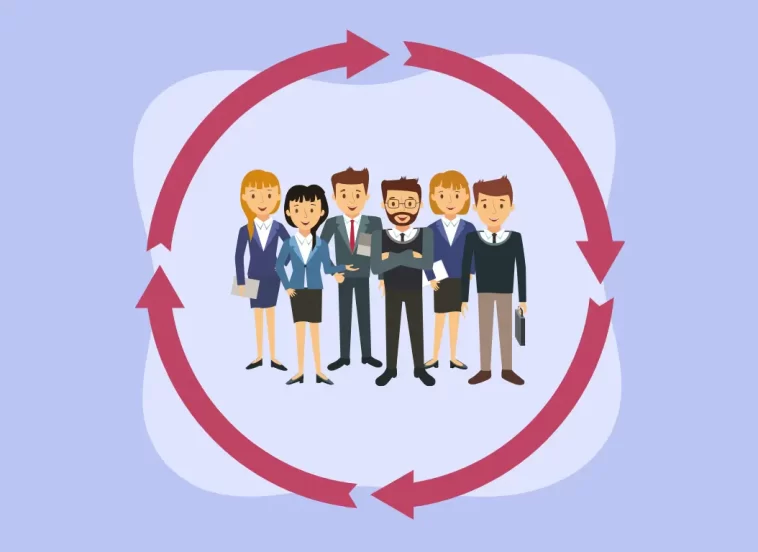The complete employee life cycle is made up of multiple different stages. Understanding how each stage in the employee life cycle works is the best way to make sure your employees are engaged and invested throughout that stage.
So in this post we will be covering the definition of the employee life cycle, also referred to as ELC, what each stage in it stands for, as well as best practices for each and every one of those stages in the ELC.
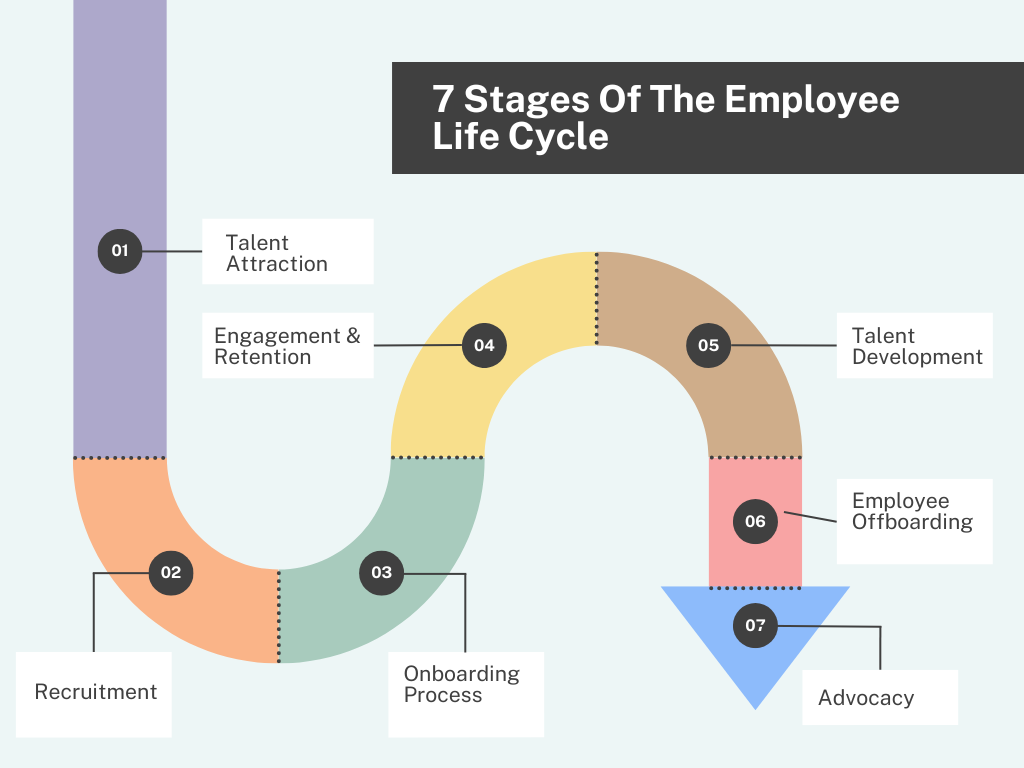
Table of Contents
What is the employee life cycle?
The employee life cycle is an HR model that identifies the different stages an employee goes through during their tenure at an organization.
Understanding how each of these stages plays an integral role in building the perfect environment for your employees and enhancing the employee experience in your organization.
An ELC where employees are engaged throughout the entire process, not only increases employee retention rates and lowers employee attrition, but also creates a company culture that attracts some of the top talent in the field.
Creating a workplace where each stage of the ELC is perfected also helps talent development, ensuring that employees can see that there is room for career advancement and that employers can practice succession planning effectively.
What are the stages of the employee life cycle?
While there are multiple different takes on the employee life cycle and its stages, there are seven universally agreed-upon stages of the employee life cycle. Those stages are:
1. Talent Attraction
2. Recruitment
3. Onboarding
4. Engagement & Retention
5. Talent Development
6. Employee Offboarding
7. Advocacy
As we go over these stages in the ELC, we will not only provide you with definitions, best practices, and key metrics to track during the stage but also some of the most useful tools you can use during that stage to improve those key metrics.
Stage 1: Attraction
The first stage of the employee life cycle is attraction. Attraction refers to the period of time before the employee interacts directly with the organization.
The attraction stage relies heavily on an organization’s ability to build a strong employer brand. An organization with a strong employer brand doesn’t need to have job postings for people to want to work there.
A company with a strong employer brand is already followed by all the top talent in the field. It is a destination that everybody wants to end up in eventually.
Examples of Companies with Strong Employer Brands
Google: Google consistently ranks at the top in employer branding. Surprisingly enough, they never even needed the help from Owen Wilson and Vince Vaughn’s help to accomplish that. In fact, that might have even lowered their chances.
Known for its innovative culture, competitive salaries, and exceptional perks, Google sets a high standard for what employees expect from a top-tier employer. They’re also known for their commitment to diversity and inclusion, alongside continuous learning and development opportunities.
Netflix: Known for its unique culture deck, which emphasizes freedom, responsibility, and high performance, Netflix offers an environment where creativity and innovation are at the forefront. Their approach to performance and compensation, along with the freedom to make impactful decisions, draws in many professionals.
While Google and Netflix are also helped by their spot as some of the most well-known brands to ever exist in order to be attractive to talent, there are examples that don’t have the same fame yet rank far above them on the great places to work list
While some organizations may rely solely upon name recognition to be attractive to talent with the number of online discussions and data out there, having a high score on “Great Place To Work” can take a company’s reputation above those that are more popular.
AppLovin: With such a wide array of positive testimonials available, alongside a 94% on their great place-to-work page, AppLovin has built an amazing brand as an employer. Their employees state proudly that they feel welcome, cared for, and empowered to be working as a part of AppLovin.
Codeway: Codeway has taken an entirely different approach to being attractive to talent. Through an incredibly effective use of their social media channels and vlog series, they’ve ensured that their company is viewed as an attractive destination for talent.
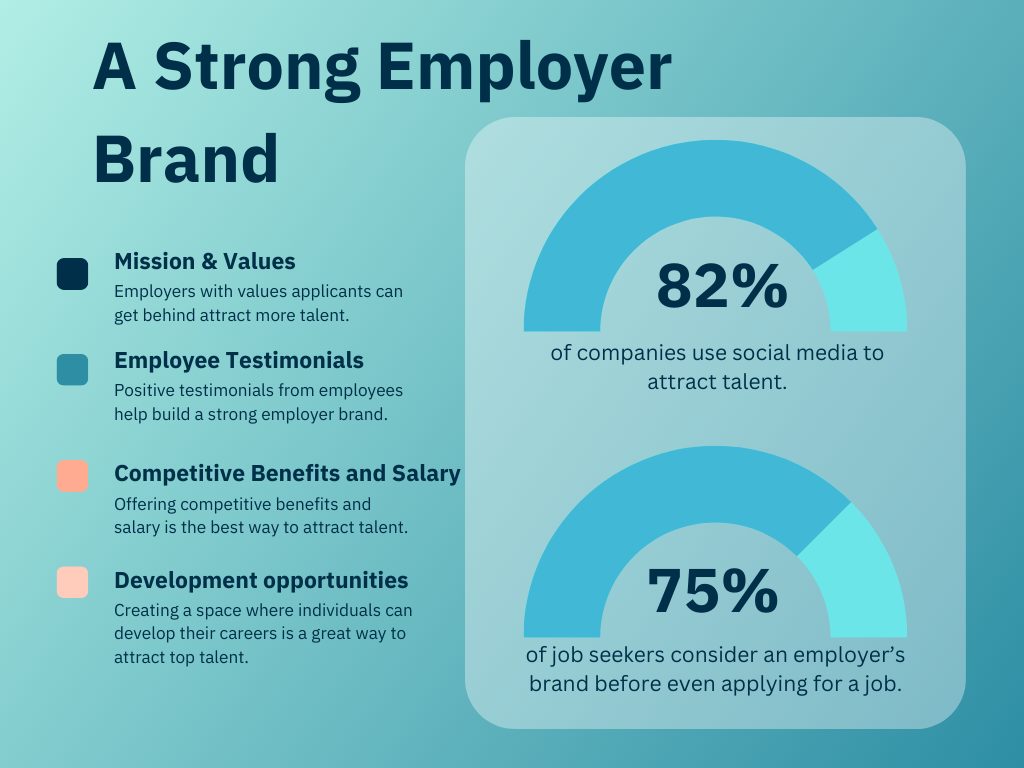
Best Practices for Talent Attraction
Define Your Value Proposition: Clearly articulate what makes your company unique as an employer. This includes your company culture, values, mission, and the benefits of working there. Understanding what sets you apart will help you communicate a consistent message.
Leverage Social Media: Utilize social media platforms to showcase your company culture, celebrate successes, and share insights into what it’s like to work at your company. Consistent and positive social media presence can attract potential candidates and build your employer brand.
Focus on Candidate Experience: Ensure that every touchpoint with potential candidates is positive. This includes clear communication, respectful interactions, and constructive feedback. A positive candidate experience can enhance your employer brand, even for those who don’t end up working for you.
Highlight Career Development Opportunities: Showcase how employees can grow and develop within your company. Career development is a significant attraction for potential employees, so highlight training programs, mentorship, and any other opportunities for growth.
Key Metrics to Track During Talent Attraction
Application Rate: The number of applications received for job openings can indicate your employer brand’s reach and appeal.
Quality of Hire: Assess the quality of new hires by looking at their performance, cultural fit, and retention. A strong employer brand should attract high-quality candidates.
Social Media Engagement: Monitor engagement on your social media posts, including likes, shares, and comments, to measure the reach and impact of your brand messaging.
Stage 2: Recruitment
The second stage of the employee life cycle, recruitment occurs once employees are attracted to the organization.
The recruitment stage is focused on selecting the right candidates for the openings the company might have. The selection process can include methods such as interviews, assessments, and background checks.
Job Postings
The recruitment process begins with the organization posting a job opening on various platforms. Creating a job posting that clearly outlines the descriptions, responsibilities, and required competencies is a must.
The job posting should also include other key factors such as location and travel necessities, whether this is a remote or in-house position, compensation, and benefits, etc.
If a job posting isn’t clear enough it will not only make the position less attractive to top talent, but also heavily increase the application review process by causing misunderstandings in applicants.
A potential checklist for the perfect job posting or opening is as follows:
- Job Title:
- Clear and accurate representation of the role.
- Avoid jargon or internal terms that may confuse applicants.
- Company Overview:
- Brief introduction to the company.
- Insight into the company culture, mission, and values.
- Role Summary:
- Overview of the role’s importance within the organization.
- Clear statement of the main purpose of the role.
- Responsibilities and Duties:
- List of key responsibilities and daily tasks.
- Clarification on how the role contributes to broader company goals.
- Skills and Qualifications:
- Required qualifications (education, experience, certifications).
- Desired skills and competencies (technical, soft skills).
- Distinguish between must-have and nice-to-have qualifications.
- Experience Requirements:
- Specific experience required, detailing years and relevant fields.
- Clarification on any industry-specific experience needed.
- Location and Travel:
- Workplace location and whether remote work is available.
- Expected amount of travel, if applicable.
- Compensation and Benefits:
- Salary range or compensation details.
- Overview of benefits (health insurance, retirement plans, etc.).
- Any additional perks (flexible hours, wellness programs, etc.).
Candidate Selection
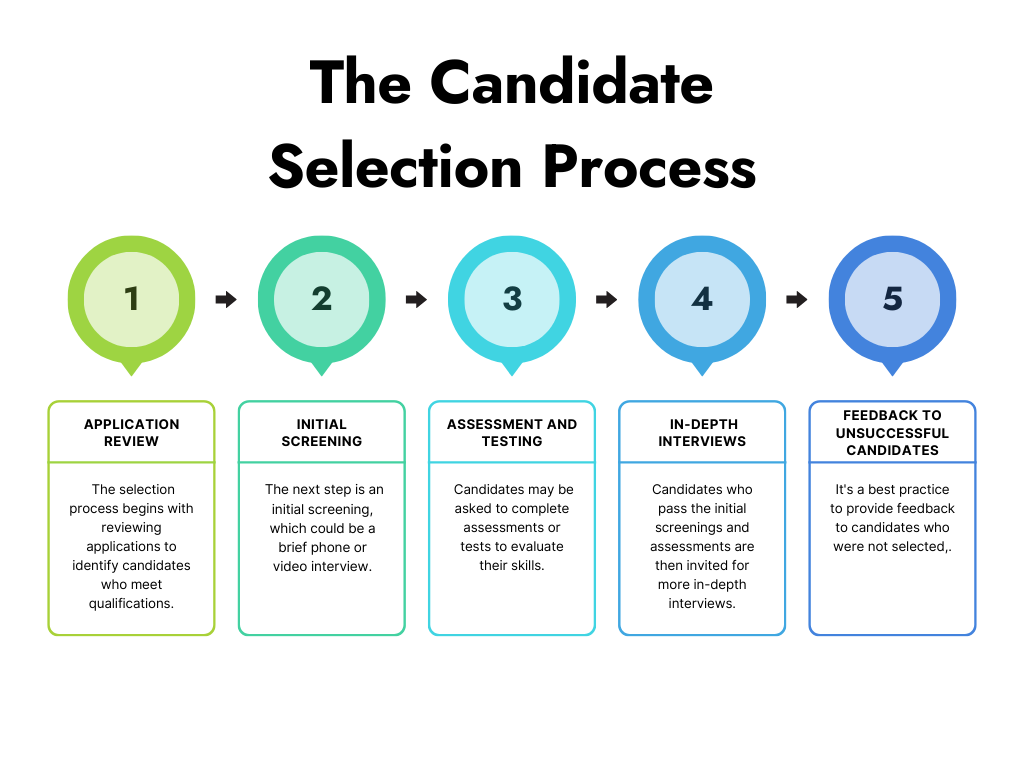
The candidate selection process, while differing from organization to organization, a universally applicable structure for the candidate selection process should follow these 5 steps.
Step 1: Application Review
The selection process begins with reviewing applications to identify candidates who meet the minimum qualifications. This stage may involve screening resumes, cover letters, and other materials submitted by applicants to determine their suitability for the role.
Step 2: Initial Screening
Often, the next step is an initial screening, which could be a brief phone or video interview. This helps gauge the candidates’ interest, communication skills, and preliminary fit for the position.
Step 3: Assessment and Testing
Depending on the role, candidates may be asked to complete assessments or tests to evaluate their skills, aptitude, and sometimes personality fit for the company culture. These assessments must be carefully designed to be relevant and fair.
Step 4: In-Depth Interviews
Candidates who pass the initial screenings and assessments are then invited for more in-depth interviews. These interviews can be conducted by HR, the hiring manager, and potentially future team members. In-depth candidate interviews aim to explore the candidate’s experience, competencies, and cultural fit in detail.
Step 5: Feedback to Unsuccessful Candidates
It’s a best practice to provide feedback to candidates who were not selected, especially those who reached the later stages of the selection process. Feedback offered to unsuccessful candidates can not only be invaluable to their professional development but it can also do wonders for a company’s employer brand.
Stage 3: Onboarding
Once a candidate has been recruited to the organization, one of the most important stages in the employee life cycle commences: Onboarding!
Onboarding is the stage where new hires are integrated into the organization. It is the acclimatization process between a new recruit and the company.
An effective onboarding process not only ensures the company helps a new hire acclimate to their surroundings and coworkers but also helps train that employee and ensures productivity in the long run.
Preboarding
While a common misconception is that onboarding starts on day one, preboarding is a great way to set the tone for new hires.
It isn’t uncommon for there to be some time between the employee signing the contract and actually joining the company.
During this time, methods such as sending out welcome e-mails, including them on group text chains, and providing them with helpful tools and resources can ensure your new hires feel welcome before day one.
Probationary Period
Onboarding periods in the employee lifecycle also function as a probationary period where both the organization and the employee can decide to sever ties.
A probationary period serves as a trial where the organization assesses whether the employee is a good fit for their culture, organizational strategy, and objectives.
The employee has every right to do the very same thing with the organization.
- We’ve highlighted some of the pros & cons of having probationary periods in this article: Pros & Cons of Probationary Periods.
- We’ve also discussed the laws surrounding probationary periods here: Probation Period Laws.
The most important thing during a probationary period during the employee life cycle is to provide the employee with a positive experience, assign them an onboarding mentor to make sure they never feel lost, and of course take their inputs into consideration throughout the onboarding process.
The probationary period is concluded with a probation review.
Regular Surveys & Reviews
Throughout the onboarding process, it is an absolute necessity to conduct surveys and onboarding reviews regularly.
Regular surveys and onboarding reviews allow the employer to not only evaluate how the new hire is fairing in their organization but also how their organization looks with a fresh pair of eyes.
When it comes to reviews, onboarding reviews are often conducted at 30-60-90-day intervals.
Surveys on the other hand can be conducted at any interval or even instantaneously.
The best way to conduct onboarding surveys, 30-60-90 day reviews, and assign onboarding tasks is to take advantage of employee onboarding software.
The Perfect Onboarding Software: Teamflect
In order to make sure the onboarding stage of the employee life cycle goes flawlessly in a structured manner, the best thing you can do is to implement a fully integrated employee onboarding solution.
While there are some great options out there, the best onboarding tool for organizations using Microsoft Teams or Outlook regularly would be Teamflect.
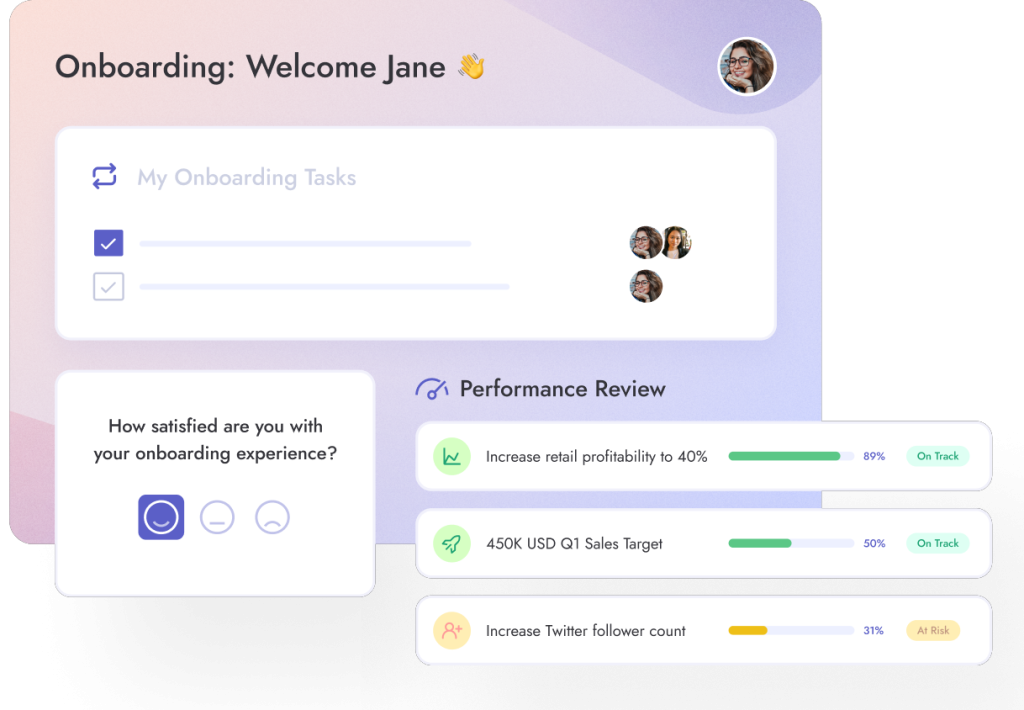
Teamflect allows users to not only conduct onboarding surveys but also automate them to be conducted at any interval of their choice right inside Microsoft Teams.
With Teamflect you can also create custom sets of onboarding tasks for each department and make sure they are assigned automatically when a new hire joins their ranks.
With an extensive library of customizable performance review templates that include onboarding reviews, Teamflect ensures a smooth and seamless onboarding experience.
